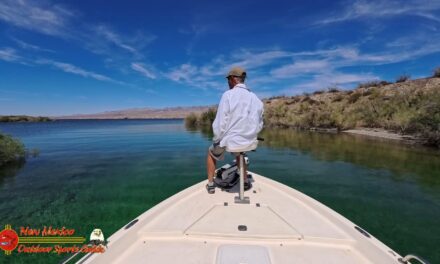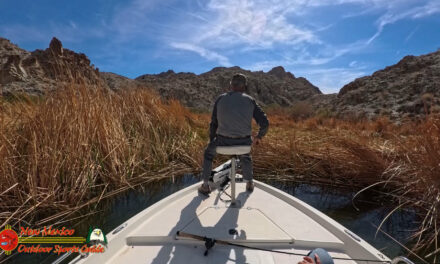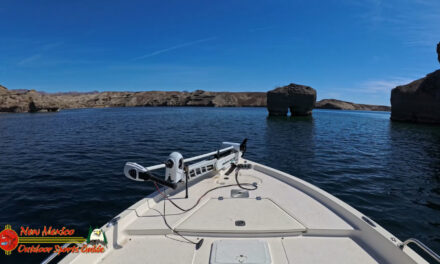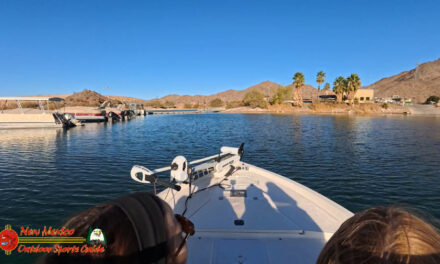How you handle a lunker impacts its chances of survival.
ATHENS, Texas–One of the biggest factors that influences the survival of fish entered into the ShareLunker program is how those fish are handled and cared for prior to being picked up by Texas Parks and Wildlife Department (TPWD) employees.
– Lake Mohave
ShareLunker handling and care tips on the TPWD web site emphasize minimal contact with the fish and keeping it in a stress-free environment as much as possible. Removing the fish from the livewell or holding tank for photographs stresses the fish, increases the chance the fish will get fungal infections where touched and multiplies the risk of serious injury such as a broken jaw.
All big bass are powerful, but anglers who have never tried to hold a fish weighing 13 pounds or more may be surprised at how strong the fish is and how hard it is to control. “We have all seen pictures of bass being held up with one hand grasping the lower jaw,” says Jim Matthews, hatchery manager at the Texas Freshwater Fisheries Center in Athens, which is home to the ShareLunker program. “Doing this with a lunker bass will almost ensure a serious injury to the fish’s jaw.”
As the person in charge of caring for ShareLunkers while they are at TFFC, biologist Juan Martinez sees all the problems that arise from improper handling. “Over-handling stresses the fish,” he says. “If anglers would just take one or two pictures and then leave the fish alone, it might not get as stressed. Other problems we see are fish coming in with missing scales or scrapes, which might come from being held in a wire basket or small container, from spawning activity or brushing against trees.”
Martinez agrees with Matthews that broken jaws on fish are usually caused bythe fish being held incorrectly when being landed or photographed. “A misconception is that the mouth of a fish with a broken jaw will remain open,” he says. “This is not always the case. If the jaw is broken in the middle and not where the jaw is connected to the skull, the mouth will remain closed. This type of injury is common when fish are held in a vertical position with the lower body not being supported.”
David Campbell, ShareLunker program manager, offers the following tips for handling big bass to avoid injuring them.
–Wet your hands before touching the fish.
–Using your dominant hand, grip the fish with your thumb inside the mouth and your fingers locked on the outside of the mouth.
–Support the rear of the fish with your other hand placed beneath the fish just forward of the tail.
–Lift the fish out of the water in a horizontal position using both hands for support.
–DO NOT hold the fish by the lower jaw in a vertical position. This can dislocate or break the jaw, practically guaranteeing the fish will not survive, since it will not be able to eat.
–Handle the fish only when putting it into a livewell or holding tank. Do not keep the fish out of water or keep removing it from the water for photographs.
“Remember that the fish has to be in the water to be able to breathe,” Campbell says. “The fish is already stressed by being caught and put into a different environment, and holding it out of the water increases the stress level. This may develop into a serious medical condition, and one to three weeks later, the fish may die. Taking photos is okay if everyone gets ready before the fish is removed from the water and is put back within thirty seconds.”
–If you must handle the fish, try to do so out of the wind and keep it out of water as little as possible. Wind can dry out the eyes very quickly and result in damage.
A 13- or 14-pound bass is the equivalent of a 170-class whitetail buck, with the difference being that the buck goes on the wall, while the fish, if properly handled and cared for, can live to continue to produce more fish. Anglers who want to continue to have the opportunity to catch big bass can improve their chances by treating those big bass like babies.
– Lake Mohave






